Stanford Play Action
One of my favorite offenses to watch is Stanford. I admire how they pound the ball from various personnel groups and formations, and are able to get big plays in the play action game.
Below I will break down a few of the different play action concepts Stanford uses with unyielding success.
- Power Pass – Basic concept used by most teams in the country. Stanford does this often to a Nub side, forcing the defense to condense down and defend a run heavy formation. This play aims to capitalize on a corner or safety getting over aggressive in the run game, and allowing the TE or back to get behind them. They bring the lone WR on a short motion, to make his drag route get across the formation quicker. One interesting thing Stanford does is to release the RB on the flat route and leave the FB in to block. Many teams slip the FB out and have the RB block on power pass. The OL slides away from the play and the FB blocks the playside edge. The RB fakes off tackle and attacks the front pylon of the end zone.
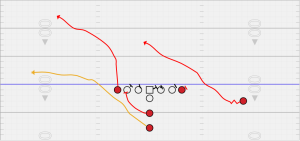
In the clip below I break down a game clip of this play.
2. FB Wheel – From another run heavy formation, Stanford fakes to the RB and the QB sets up in the pocket. The lone WR and playside TE attack vertically down the numbers and seam, this pulls the deep coverage with them. The FB widens at the snap and runs a wheel route. His route ends up following the vertical routes and he is able to settle in a wide open space cleared out by the vertical routes. The backside TE works the middle of the field to get open as a check down option for the QB
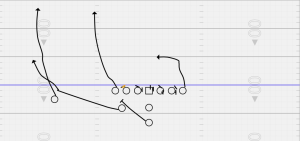
In the clip below I break down a game clip of this play.
3. 3 verticals Switch – From a heavy personnel set, Stanford uses the 2 TEs to widen the safeties and open up the middle of the field. The boundary TE widens on a vertical route. The field TE widens with his release and runs a corner route to occupy the safety over him. The Wing (on the wideside) works vertically with some width, and crosses underneath the TE’s corner route. This “Switch” or criss crossing gets him wide open
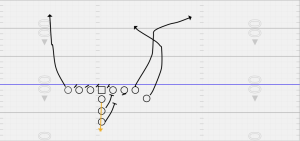
In the clip below I break down a game clip of this play.
4. Wheel – In this concept Stanford fakes a perimeter run, in this case their Rb quick toss (with power influence blocking) . By stacking the WRs by formation, they are able to cross their route stems. The outside WR pushes vertically and settles inside. The slot works wide like he is attacking the corner to block him, and then turns it into a wheel route.
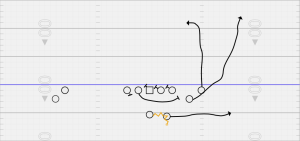
In the clip below I break down a game clip of this play.
5. RB Wheel – From a 2 back (splitback) set, Stanford shows inverted veer, or power read in the backfield. The blocking scheme sets this play up. They would often have the single WR crack the LB, and put the playside RB (in this case Christian McCaffrey) on the CB. On this play action, C-Mac is actually running a wheel as the corner follows the #1 WR inside, and the safety flies up to aggressively force the run.
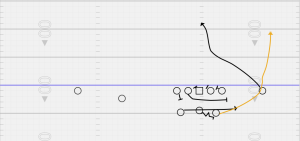
In the clip below I break down a game clip of this play.
Conclusion: Stanford is able to protect their best run concepts by having answers in the play action game. The play action pass concepts Stanford uses look just like their top run concepts, and are designed to attack specific defenders who are being overly aggressive, and vacating their pass coverage responsibilities in order to make plays in the run game. Stanford’s play action game is efficient, and is a balanced mix of quick hitting routes, vertical routes, and wheel routes. From the examples above it is clear that the wheel route in various fashions is a main concept in their offense and provides big play potential. In the clips above Stanford was able to get big plays on wheel routes to a slot, a FB, and a RB.
![]()
